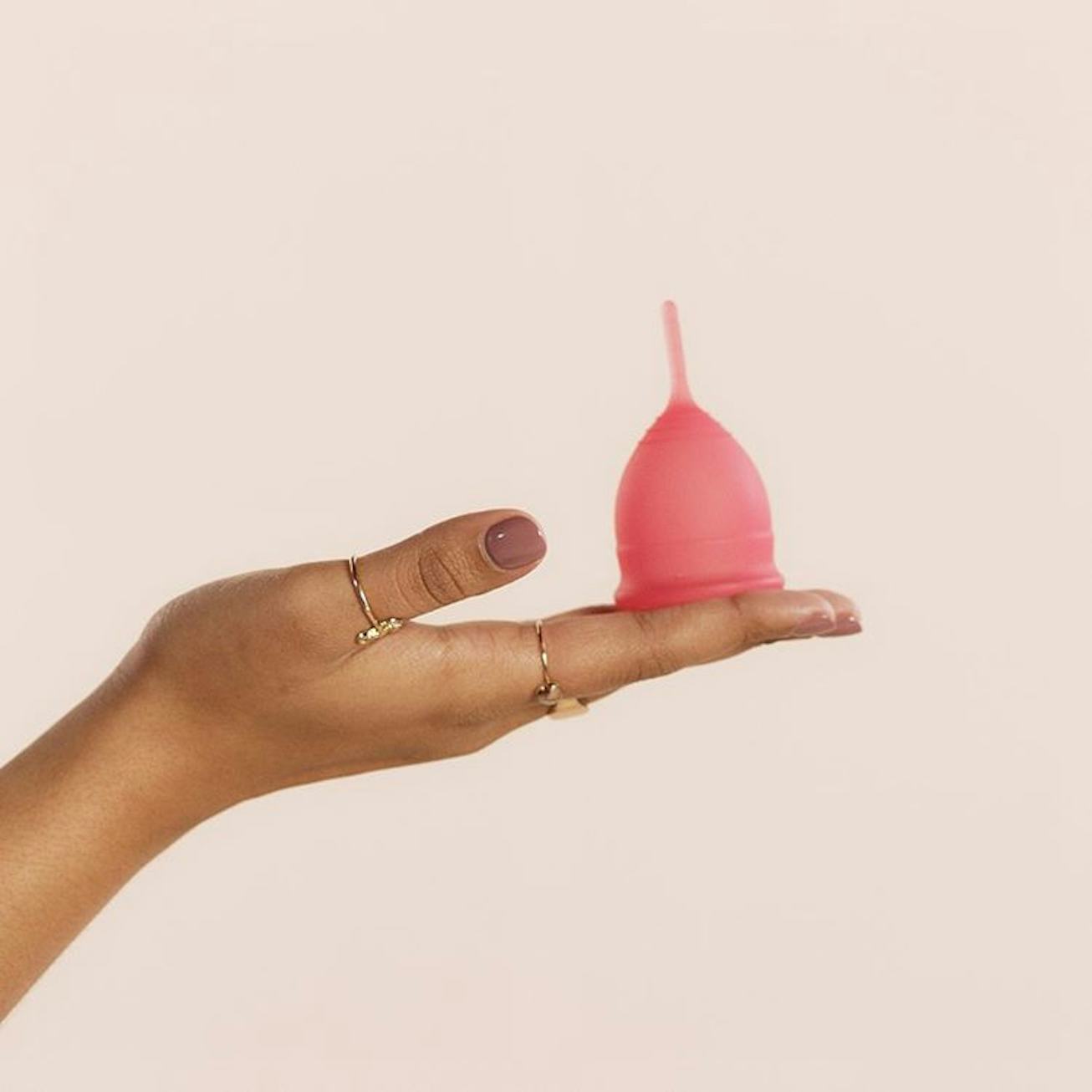Beauty
Everything You Still Want To Know About Menstrual Cups — And Which To Try
From deciding on if they're right for you to which to buy.
There are more options available than ever when it comes to period products, and in recent years, menstrual cups have become an increasingly popular way to go. Typically made of silicone, menstrual cups are an alternative option to the period product norm, and with sizes suited for all flow types, cups are an option that nearly everyone can take advantage of. If you're interested in making the switch or want to learn more, read on for the best menstrual cups available right now, and how to make sure they're the right choice for you.
Choosing a cup comes down to personal preference, body type, and need. There's no shortage of brands or designs to choose from, but if you are a first-time cup user, you do want to give yourself time to adjust. When it comes to the cup learning curve, Kelly McGregor, vice-president of marketing and communications for DivaCup, said that it usually takes two to three cycles for a person to fully adjust to the application process.
In order to make the transition go a little smoother, NYLON spoke with a few experts, and here's what you need to know about selecting the right menstrual cup for you.
Why You Should Consider A Switch To Menstrual Cups
According to Arion Long, founder and CEO of Femly Cup, menstrual cups are a perfect alternative for someone that wants a more eco-friendly option, or for someone in need of extended protection not provided by a typical period product. "When properly inserted, menstrual cups are quite comfortable and they're similar to a tampon in that you don’t feel them," she said. "They are much more sustainable than other options and cut down on the lifetime costs since their reusable, while also being eco-friendly."
Unlike the frequent changing often required of tampons or pads, most menstrual cups last for up to 12 hours, Vili Petrova, founder and CEO of Lena Cup told NYLON. "Most people only need to empty their cups once in the morning and then again in evening," she said.
How To Decide On A Menstrual Cup
Like other period products, menstrual cups are created for specific flow types. Long noted that the average period includes the loss of about six to eight teaspoons of blood, and menstrual cups are created to handle that, with variations in size for period flow and the age of the user.
But, like any other period product, some may find that a menstrual cup was not made for their particular flow or body. McGregor pointed out that discomfort is a possibility for some. If you do have concerns about how the product feels, it's best to consult with your trusted health professional.
If you're unsure where to begin when it comes to deciding between sizes of a cup, McGregor suggested carefully examining your lifestyle, including your type of flow, whether you work out, whether you've had children, and what you want out of a cup. "It's not like buying a tampon in the sense that you're thinking of whether you need light, medium or heavy," she said. "There are other things you need to think about."
Before making the final purchase, McGregor says to carefully do your research on a cup you're considering. She suggested reading the label, talking to friends, or looking up information online. "One of the things you need to ask yourself is, what is this cup made of," she said. She said to look for cups with 100 percent medical grade silicone, as this means the product is approved for use inside the body. She also said to look out for latex-made cups if you're allergic to latex, and to consider the length of a cup's stem (as this impacts application), along with whether it includes dye. Most importantly, McGregor says to keep your personal health and comfort in mind.
The Best Way To Care For Your Menstrual Cup
Most menstrual cups will come with information on how long they can be used for. However, McGregor noted that ensuring the life of your cup comes down to proper care and use. When it comes to cleaning the cup, you should not use soap and water, but instead look for products created specifically for cleansing cups. "Use a mild, low pH, non-scented product that is not going to be uncomfortable for you," McGregor said. She also suggested looking for cup cleaning wipes, a great alternative should you ever need to clean while you're on the go.
Additionally, every two to three months, McGregor suggested boiling your cup so as to rid it of harmful bacteria and to provide a thorough cleanse. She noted that the frequency of boiling comes down to personal use, and how often you are cleansing the cup in between usage. "If you're not as devoted in terms of your cleaning, you might want to boil it more often than if you're somebody who is washing their cup regularly," she said.
Now that you're more informed on cups, start scrolling through some of the options.
We only include products that have been independently selected by NYLON's editorial team. However, we may receive a portion of sales if you purchase a product through a link in this article.
